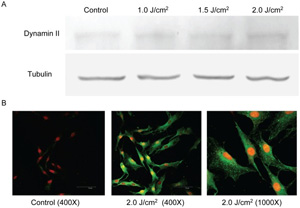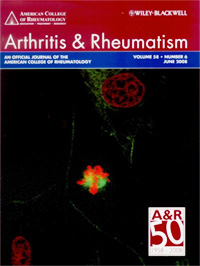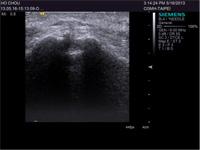Research
Besides offering the best rehabilitation treatment services to our patients, we also emphasize strongly on research and development. Currently we have 5 attending physicians who have successfully obtained their PhD degrees. They have obtained PhD degrees from renowned schools such as Johns Hopkins University and King’s College London. During the past decade, our department has published numerous articles with high impact factors in international renowned medical journals. Many of these articles were selected as the cover stories for the journals.
In-depth research covering a wide range of interesting topics and fields are constantly conducted in our department. Here, we will mention only a few outstanding and international known research works done by our attending physicians:
Professor Wong, Alice May-Kuen
Professor Wong is now the superintendent of Chang Gung Memorial Hospital at Taoyuan branch. She is well known for her outstanding research on acupuncture, and the effects of exercises (such as Tai Chi and swimming) on balance and gait. Several of professor Wong’s articles were published on renowned journals such as American Journal of Physical Medicine and Rehabilitation, and Archives of Geriatrics & Gerontology.
Ex/ Alice M.K. Wong, Shih-Wei Chou, Shu-Chun Huang, Ching Lan, Hsieh-Ching Chen, Wei-Hsien Hong , Carl P.C. Chen , Yu-Cheng Pei: Does different exercise have the same effect of health promotion for the elderly? Comparison of training-specific effect of Tai Chi and swimming on motor control. Archives of Gerontology and Geriatrics 2011;53(9):e133-e137.
Professor Tsai, Wen-Chung
Professor Tsai is now the chairman of our department in all three Chang Gung Memorial Hospital branches. He obtained his PhD degree from Chang Gung University and runs a well-known tendinopathy research laboratory in Chang Gung University now. His laboratory is aimed to provide laboratory-based evidences to support the use of physical modality to treat patients with tendinopathy. Professor Tsai’s research team has documented the positive effects and molecular mechanisms of therapeutic ultrasound and low-level laser to promote tendon healing. Currently, the effects of platelet rich plasma on tendinopathy are under investigation and promising results will be anticipated. Professor Tsai has published many articles in high impact factor journals such as PLOS ONE, and Journal of Orthopedic Research.

The expression of dynamin 2 in tenocytes.
1. Western blot analysis revealed that dynamin 2 was up-regulated by laser treatment. The tubulin (as internal control) and dynamin 2 were identified at 57 kDa and 100 kDa respectively. (A) Immnofluorescence staining revealed the significantly increased dynamin 2 expression in cytoplasm as indicated by fluorescent-green stain. (Plos One 2012:7(5)).
2. Ex/ WC Tsai, CC Hsu, JH S. Pang, MS Lin, YH Chen, FC Liang. Low-level laser irradiation stimulates tenocyte migration with up-regulation of dynamin II expression. PLoS ONE. May 2012 | Volume 7 | Issue 5 | e38235 (SCI).
One of professor Tsai’s outstanding articles was published as the cover story in Arthritis & Rheumatism in 2008. This is a tremendous honor as this journal has a high impact factor of 7.866.

Cover page of Arthritis & Rheumatism.
WC Tsai, Hsu CC, FT Tang, Alice, MK Wong, YC Chen, JHS Pang*. Ciprofloxacin mediated cell proliferation inhibition and G2/M cell cycle arrest in tendon cells. Arthritis & Rheumatism 2008;58:1657-1663.
Associate Professor Chen, Carl PC
Dr Chen obtained his PhD degree in geriatric medicine from King’s College London. During his three years of PhD studentship in the United Kingdom, Carl underwent extensive training in the science of proteomics. As a result, he has further applied the science of proteomics into his aging studies. During the past few years, Carl has published numerous articles on aging in well-known neuroscience and geriatric medicine journals. These journals are with high science citation index impact factors. Carl has discovered several important biomarkers in the cerebrospinal fluid (CSF) and synovial fluid (SF) that are associated with aging and osteoarthritis of the knees. Here are some of the proteomics articles that Carl has published during the past few years:
- Chen, C.P.*, Chen, R.L., Preston, J.E. Age-Related Increase of Prostaglandin D2 Synthase Concentration and Glycation in Ovine Cerebrospinal Fluid. Exp Gerontol 2009;44: 639–645 (SCI; IF = 3.804; Geriatrics & Gerontology 10/45 (22%)).
- Chen, C.P.*, Chen, R.L., Preston, J.E. The Influence of Ageing in the Cerebrospinal Fluid Concentrations of Proteins that are Derived from the Choroid Plexus, Brain, and Plasma. Exp Gerontol 2012;47: 323–8 (SCI; IF = 3.804; Geriatrics & Gerontology 10/45 (22%)).
- Chen, C.P.*, Hsu CC, Yeh WL, Lin HC, Hsieh SY, Lin, SC, Chen MJ, Chen TT, Tang SF*. Optimizing Human Synovial Fluid Preparation for Two-Dimensional Gel Electrophoresis. Proteome Sci 2011, 9:65 (SCI; IF = 2.488; BIOCHEMICAL RESEARCH METHODS 35/71 (49%)).
In clinical medicine, Carl has done extensive research in the fields of ultrasound-guided injection treatments, gait analysis, and orthotics. Soft tissue (musculoskeletal) disorders such as tendon and muscle strain, muscle tear, bursitis, hematoma, and fluid accumulation within the soft tissue, are common problems often observed in a clinical setting. Even with careful physical examination, these disorders are often difficult to be diagnosed correctly. Sometimes expensive imaging tools such as magnetic resonance imaging (MRI) may be needed to accurately diagnose these soft tissue problems. The treatment of these disorders often involves the insertion of needles for injection and aspiration. This is often done using the blind technique. As a result, there is a high possibility that the needles may fail to reach the lesion sites.
Low back pain is the chief complaint that is often heard in an outpatient clinic. Herniated intervertebral discs and spinal stenosis are the possible causes of low back pain. It is important to find the real cause of low back pain before an optimal treatment option can be chosen. The treatment of low back pain includes oral medications, local injections, physical therapy, and surgery. Carl has successfully developed the application of using soft tissue ultrasound in performing ultrasound-guided caudal epidural spinal injection for the treatment of low back pain. Caudal epidural injection is effective in treating low back pain caused by lumbar stenosis syndrome and lumbosacral intervertebral disc herniations.


Figures on how ultrasound-guided caudal epidural injection is performed.
Left: The transverse view of the ultrasound probe is applied first to obtain the transverse view of the sacral hiatus.
Right: The probe is then turned 90 degrees to obtain the longitudinal view of the sacral hiatus. It is under this longitudinal view that the needle is inserted into the sacral hiatus for successful caudal epidural injection.
Carl has published many articles on ultrasound-guided injection techniques in well-known journals such as Anesthesiology, American Journal of Physical Medicine and Rehabilitation, and Archives of Physical Medicine and Rehabilitation. His article on using ultrasound on predicting the success rate of caudal epidural injections was selected as the cover story on that specific edition of Archives of Physical Medicine and Rehabilitation:
Chen CP, Wong AM, Hsu CC, Tsai WC, Chang CN, Lin SC, Huang YC, Chang CH, Tang SF*. Ultrasound as a screening tool for proceeding with caudal epidural injections. Arch Phys Med Rehabil 2010; 91(3):358-63 (SCI; IF = 2.254; Rehabilitation 7/44 (16%)).
Besides ultrasound-guided caudal epidural injection, Carl has also demonstrated other injection techniques such as ultrasound-guided sacroiliac joint, piriformis muscle, plantar fascia, and retrocalcaneal bursa injections. The American Journal of Physical Medicine and Rehabilitation has invited Carl to write review papers and record injection videos (Video Gallery Articles) for the journal. Few of these videos have been put on YOUTUBE for public viewing.
- Ultrasound-guided sacroiliac joint injection
- Ultrasound-guided injection treatment of retrocalcaneal bursitis
Assistant Professor Pei, Yu-Cheng
Dr. Pei obtained his PhD degree in neuroscience from the famous Johns Hopkins University. After Dr Pei returned to Taiwan in 2009, he has published numerous articles on important journals with impact factors of greater than 10. Dr Pei currently conducts world class neuroscience laboratories in our hospital and has accepted foreign PhD students from India and USA. Here are some examples of Dr. Pei’s outstanding publications:
- Pei Y, Hsiao SS, Craig JC, Bensmaia SJ. Neural mechanisms of tactile motion integration in primary somatosensory cortex. Neuron. 2011; 69(3):536-547.
- Pei Y, Hsiao SS, Craig JC, Bensmaia SJ. Shape invariant coding of motion direction in primary somatosensory cortex. PLoS Biology. 2010;8(2):e1000305.
- Pei Y, Denchev PV, Hsiao SS, Craig JC, Bensmaia SJ. Convergence of submodality specific input onto neurons in primary somatosensory cortex J. Neurophysiol. 2009 Jun;102(3):1843-53.
- Pei Y, Hsiao SS, Bensmaia SJ. The tactile integration of local motion cues is analogous to its visual counterpart. Proc Natl Acad Sci U S A. 2008 Jun 10;105(23):8130-5.